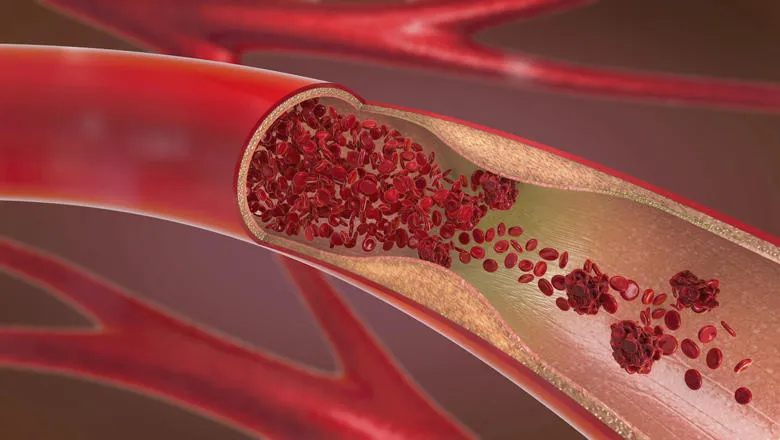By unravelling the intricate mechanisms driving vascular aging, we are not only shedding light on fundamental biological processes but also paving the way for transformative interventions. Understanding how molecules like Sox9 influence cellular senescence in blood vessels holds the key to developing targeted therapies for age-related vascular diseases, and hopefully, enhance the quality of life for millions worldwide.”
Dr Maria Faleeva
14 February 2024
Researchers uncover key molecule influencing vascular ageing
A new study shows how the molecule Sox9 is involved in a positive feedback loop that accelerates the ageing of blood vessels, which could be used as a target for new therapies.

King's scientists have uncovered a key player in the ageing process of blood vessels: the molecule Sox9. These results reveal a positive feedback loop that speeds up cellular senescence; a major culprit behind vascular ageing. These insights can help clinicians measure vascular health and to develop new therapies.
Cellular senescence refers to a process where cells lose their ability to divide, halting their growth and replication. It is a pivotal mechanism in the ageing process, affecting various cell types, including those composing our blood vessels. Furthermore, the ageing of these vessels is often linked to a build-up of calcium, known as calcification, and changes to the extracellular matrix (ECM)- a network of proteins that surround the vessel’s outer layers.
Scientists have long been intrigued by Sox9, a molecule associated with muscle cells within blood vessels, but its role in vessel calcification and ageing remained a mystery. A new paper, published in Circulation Research and led by Dr Maria Faleeva, a former PhD student at King’s, investigated this relationship.
Initial analysis of blood vessels taken from patients didn’t find a direct connection between Sox9 and calcification. Instead, researchers found that Sox9 correlated with a molecule indicative of senescence, suggesting a link to the process.
Further experiments with cultured human muscle cells from blood vessels highlighted the role of Sox9 in cellular senescence. As the cells underwent senescence, Sox9 expression levels increased and accelerated the process by changing the ECM of proteins surrounding the cells.
The team confirmed the ECM’s ability to trigger senescence by introducing young, non-senescent cells into a matrix modified by Sox9, which then resulted in the manifestation of senescence characteristics. Conversely, when senescent cells were grown in an ECM environment lacking Sox9, a remarkable reversal occurred; they resumed proliferation akin to their youthful counterparts.
The observed increase in ECM stiffness within senescent cells were found to promote greater expression of Sox9, which then continued to drive senescence within the vessel’s muscle cells. This creates a positive feedback loop that perpetuates cellular senescence and accelerated blood vessel ageing.
These results not only shine a light on an important chemical process that drives the ageing of blood vessels, but it also identifies important molecular targets. Sox9, along with other molecules involved in the process, can potentially be used to monitor vascular health and be potential therapeutic targets for combating age-related vascular diseases.
